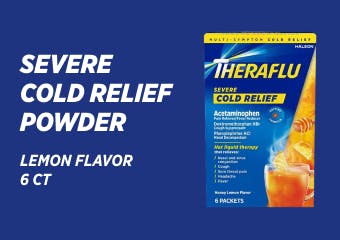How Do Colds and Flu Spread?
Inhaling germs: A cold or flu virus can be spread when you inhale air droplets produced when an infected person coughs or sneezes.2,3
Direct human contact: Everyday forms of close contact with someone who has the cold or flu – such as kissing, hugging or shaking hands – can also put you at risk of catching their virus.2,3
Touching surfaces: Viruses can also spread if you touch a contaminated surface and then touch your mouth, nose or eyes.2,3 Unfortunately, viral bacteria can remain active on most surfaces for several hours after they’ve been handled by a someone who is sick. This means that everyday objects such as door handles, light switches or railings on public transport could, in theory, pass a virus on to you.4
Read more about how long a cold or flu is contagious.
Cold and Flu Prevention – How to Prevent Cold and Flu
Flu vaccination
One of the most effective ways you can help protect yourself against getting sick, the flu vaccination reduces your risk of getting flu by between 40 and 60 percent on average. However, keep in mind that the flu shot will not protect you against the common cold.5
It’s especially important that people who have a higher risk of developing serious flu-related complications get their flu shot. This ‘at risk’ group includes young children (over six months old), people aged over 65 years, pregnant women, and those with certain medical conditions – including asthma, diabetes, HIV/AIDS or cancer.6
Wash your hands
To remove potential pathogens or viruses on your hands, wash them with soap for a full 20 seconds (sing the tune of “Happy Birthday” twice to make it to that time) and make sure you wash under your fingernails and between your fingers, too. If no soap or water is available, use an alcohol-based hand sanitizer and rub it in thoroughly.2
Clean and disinfect surfaces
Cleaning and disinfecting surfaces at home when a family member is sick will help prevent the spread of colds and flu by removing germs from any contaminated surfaces.2 Cleaning and disinfecting are two different things, so it’s important to do both in order to help protect yourself and others from cold or flu viruses.
According to the Centers for Disease Control and Prevention, ‘cleaning’ is the removal of germs, dirt and impurities from surfaces. Cleaning doesn’t kill germs, but it lowers their numbers and the risk of spreading infection by removing them. ‘Disinfecting’ refers to using chemicals (for example, EPA-registered disinfectants) to kill germs on surfaces. It does not necessarily clean dirty surfaces or remove germs, but disinfecting can further lower the risk of spreading infection by killing germs on a surface after cleaning it.
Carrying antibacterial wipes with you can be useful as you can use them to disinfect frequently touched surfaces, like cart handles, table tops and door knobs.
Keep Coughing and Sneezing to Yourself
If you want to know how colds spread, you can be sure that sneezing or coughing near others is a good way to do it. A typical sneeze or cough can spread viruses over a distance of up to six feet.3 Always cough or sneeze into a tissue if you have one with you. If you don’t have a tissue on hand, do it into the crook of your elbow. This is far better than sneezing or coughing into your hands, which can help spread the virus when you next touch something. Sneezing or coughing into the crook of your elbow will help cover your nose and mouth, prevent the germs from spreading as far in the air, and leave your hands clean.2
Healthy Eating
Your immune system depends on a wide variety of antioxidants, vitamins and other nutrients, so it’s important to look after your diet. Eat a wide variety of fruits and vegetables, nuts, proteins and carbohydrates to ensure you’re getting all the nutrients you need. This will help prevent colds and flu by supporting your immune system as much as possible.7
Vitamins C and D
These two common vitamins have been shown to help shorten the length of colds and reduce the severity of symptoms, to help you recover that little bit faster.8 Thankfully, getting your daily dose of vitamin D is quite easy, because your body makes it when your skin comes into contact with direct sunlight. On cloudier days, however, you can also find vitamin D in oily fish (such as salmon), egg yolks or red meat.9 Vitamin C can be found in lots of fruits and vegetables – such as oranges, strawberries, blackcurrants, broccoli, brussels sprouts and peppers.10
You can also take dietary supplements to increase your intake of either of these vitamins.
Keep hydrated and rest
Cold and flu prevention tips don’t come much better than this – drinks lots of fluids and rest as much as possible.2 During sleep, your body works to support and maintain your physical health – restoring, rejuvenating and repairing itself. You may be more prone to illness if you’re tired or overworked, so be sure to get the recommended 7-9 hours of sleep per night for adults.11 It’s also essential that you keep your fluids up. Be sure to drink water (or other non-caffeinated and low-sugar beverages like juice or tea) consistently throughout the day.12
Reduce stress
Cold and flu prevention advice often fails to address this important aspect – but being stressed can leave you more prone to illness by putting your immune system under strain. Stress decreases the body’s lymphocytes (white blood cells that help fight off infection), leaving you at higher risk of getting viruses like the common cold or flu.13
If you’re feeling stressed, there are some simple actions you can take to help reduce it. Light daily physical exercise (even a short walk), mindfulness activities like meditation or yoga, getting enough sleep, and trying to avoid smoking and drinking can all go a long way to helping combat stress.14




